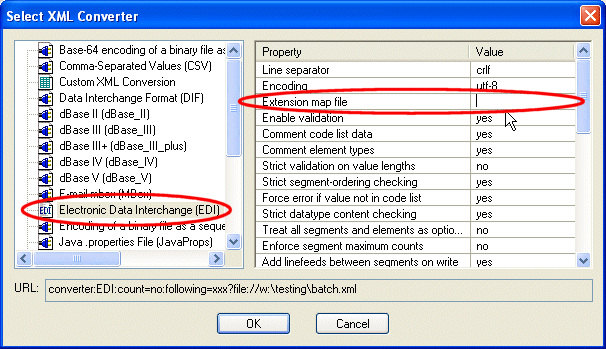|
Home >Online Product Documentation >Table of Contents >Converting Custom EDI Message Types Converting Custom EDI Message TypesDataDirect XML Converters supports the Standard Exchange Format (SEF). SEF allows you to describe structure of an EDI document based on an extension (or restriction) to a standard EDI message type. You can instruct the EDI XML Converter to read your SEF extension file and use it when converting your proprietary EDI to XML. Working with SEF FilesYou can build a SEF file based on the SEF specification. A copy of the SEF standard specification has been placed on the DataDirect XML Converters web site: http://www.xmlconverters.com/SEF A far easier way is to use the Stylus Studio EDI to XML module to create a SEF file. Using graphical tools, the EDI to XML editor allows you to
See Chapter 4 Converting EDI to XML for more information. Process OverviewThe process for converting a custom EDI message type includes the following steps:
1. Create a SEF file ( mycustomEDI.sef, for example) that describes how the custom EDI message type differs from the EDI standard on which it is based - its extensions or restrictions, in other words. The purpose of this document is to teach the DataDirect XML Converters engine about the differences between your custom EDI message type and the EDI standard message type on which it is based.
2. Open the EDI file you want to convert to XML. Select File > Open, and then select the Open Using XML Converter check box.
3. Select the EDI XML Converter in the Select XML Converter dialog box.
4. Specify the file URL for the SEF file ( mycustomEDI.sef , for example) in the Extension map file property. See Specifying the SEF File Location if you need help with this step.
5. Click OK to convert your custom EDI message type to XML.
Specifying the SEF File LocationYou can specify the location of the SEF file in the Extension map file property using Note that if you are using a relative path, it must be relative to the same directories in which the DataDirect XML Converters executables are installed:
In environments in which the location of the |
XML PRODUCTIVITY THROUGH INNOVATION ™

 Cart
Cart


